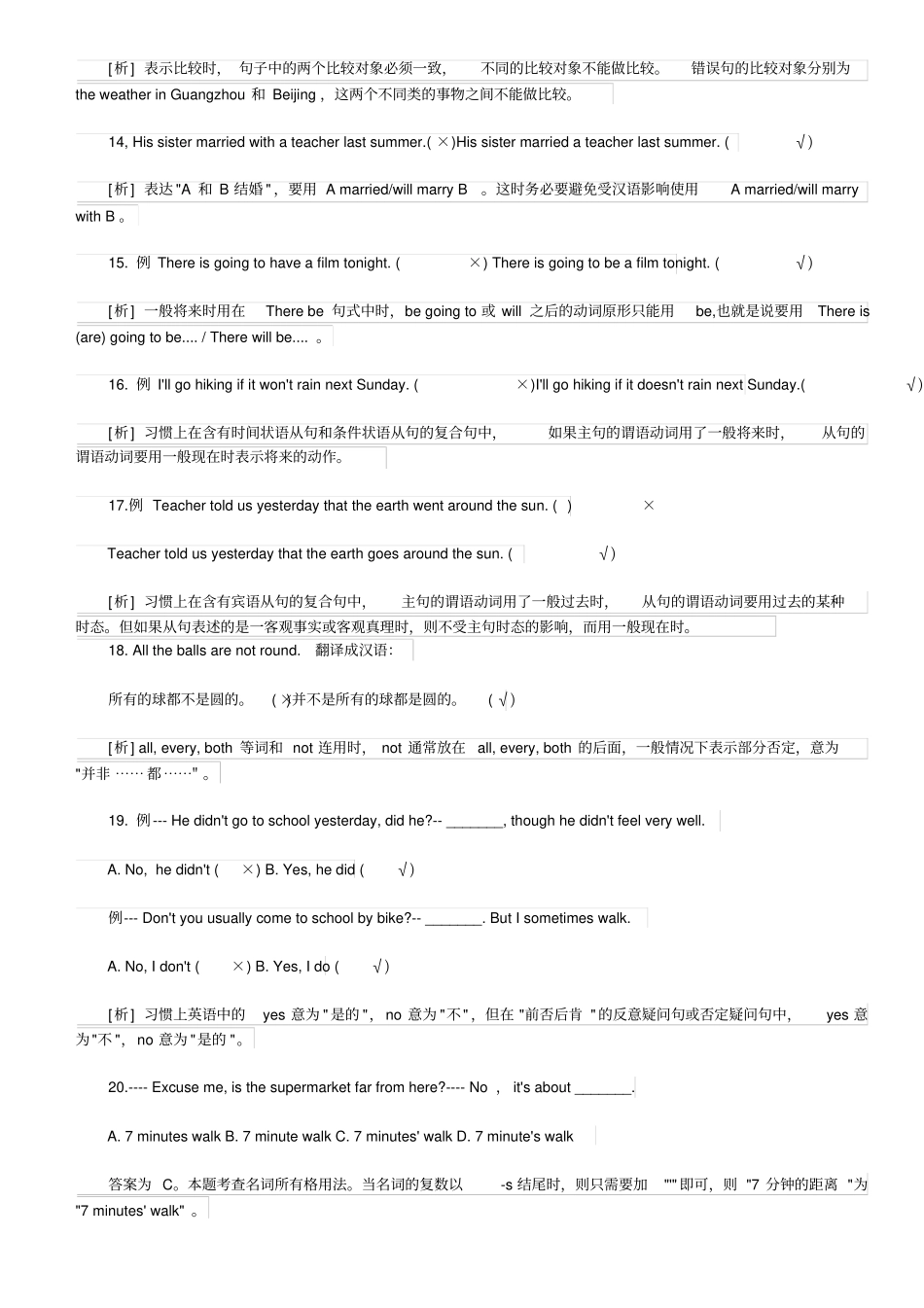小升初英语常见易错题解析1.Ten minus three are seven. (×)Ten minus three is seven. (√)[析] 用英语表示加 (plus) 、减 (minus)等数学运算时,谓语动词也用单数形式。2.Each of the boys have a pen. (×)Each of the boys has a pen. (√)[析] 复数名词前有表个体的each of, one of, every,either of 等词组修饰,或有表否定的neither of, none of 等词组修饰时,谓语动词要用单数形式。3.The box is too heavy for him to carry it. (×)The box is too heavy for him to carry. (√)[析] the box 既是这句话的主语, 也是不定式to carry 的逻辑宾语,若句末再加上it,就和 the box 重复了。4.Because he was ill yesterday, so he didn't go to work. (×)Because he was ill yesterday, he didn't go to work. (√)He was ill yesterday, so he didn't go to work. (√)[析] 用 though, but 表示 "虽然 ⋯⋯ ,但是 ⋯⋯ " 或用 because, so 表示 "因为 ⋯⋯ ,所以 ⋯⋯" 时,though 和 but 及 because和 so 都只能择一而用,不能两者同时使用。5.例:那是你心软 ! 我不就是一个例子吗?Neither he nor you is good at English. (×)Neither he nor you are good at English. (√)[析] either... or..., neither... nor..., not only..., but also... 等词组连接句子的两个主语时,谓语动词遵循"就近一致原则 ", 即由靠近谓语的那个主语决定谓语的人称和数用何种形式。6.The Smiths have moved Beijing. (×)The Smiths have moved to Beijing. (√)[ 析] 不及物动词后接名词或代词作宾语时,要在动词之后加上适当的介词;但不及物动词后接home, here, there 等副词作宾语时,动词之后不必加任何介词。7.The number of the workers in this factory are about 5,000. (×)The number of the workers in this factory is about 5,000. (√)[析] the number of 表示 " ⋯⋯ 的数量 ",谓语动词用单数形式;a number of 的意思是 " 若干 " 或"许多 ",相当于some 或 a lot of,和复数名词连用,谓语动词用复数形式。8. 例. Hello! I have important something to tell you. (×)Hello! I have something i...


